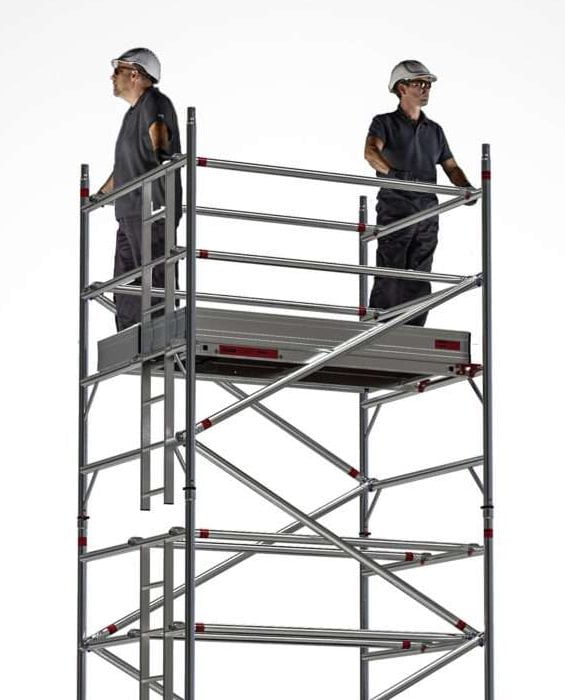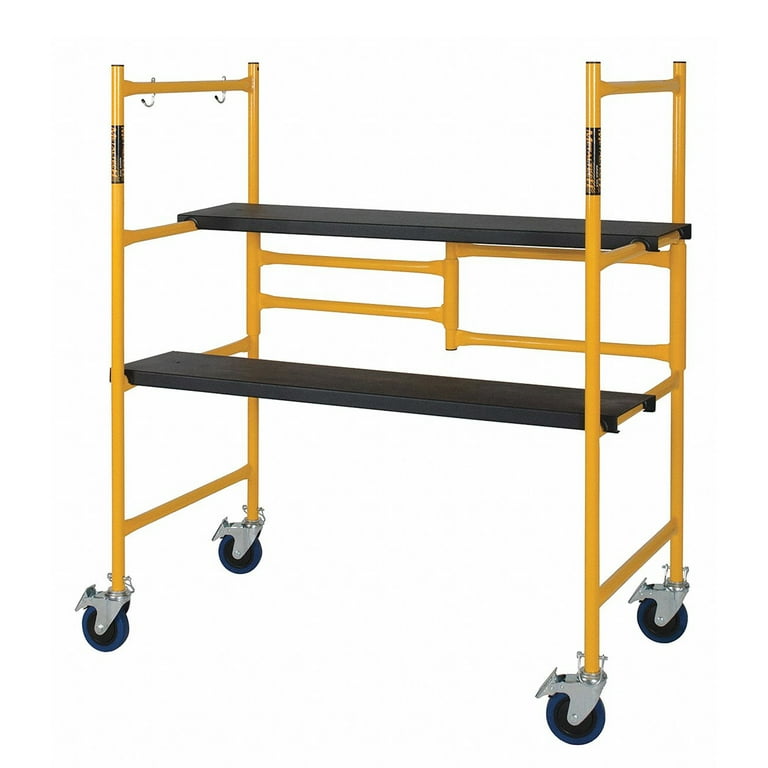Temporary Roof Scaffolding for Your Construction or Renovation Project
Temporary Roof Scaffolding for Your Construction or Renovation Project
Blog Article
Checking Out the Numerous Sorts Of Scaffolding Utilized in Construction Tasks
The building and construction market relies greatly on numerous kinds of scaffolding to satisfy particular task demands, each offering unique benefits and applications. Conventional structure scaffolding gives a strong foundation for basic tasks, while put on hold scaffolding is crucial for work with high-rise frameworks. Other alternatives, such as system and rolling scaffolding, provide to efficiency and wheelchair, respectively. The cantilever variant confirms vital in urban settings where space is constricted. Understanding the nuances of these scaffolding types is vital for enhancing security and efficiency on building sites, motivating a more detailed examination of their distinct qualities and applications.

Typical Structure Scaffolding
Conventional frame scaffolding is one of the most commonly made use of approaches in the building sector as a result of its robustness and adaptability. This system consists of horizontal and upright frames that are put together to produce a steady system for products and workers. The main components consist of vertical posts, horizontal journals, and diagonal braces, which together provide a solid structure that can support considerable loads.
One of the essential benefits of conventional framework scaffolding is its versatility to various building and construction projects, ranging from residential structures to large industrial structures. The modular style allows for very easy setting up and disassembly, making it effective for both temporary and long-lasting tasks. In addition, the system can be tailored in height and width, suiting different structure designs and site problems.
Safety is extremely important in scaffolding applications, and traditional structure systems are geared up with guardrails and toe boards to protect against drops and make sure employee protection. Normal examinations and adherence to security regulations are crucial in preserving the honesty of the scaffold (Scaffolding). Overall, traditional framework scaffolding remains a basic option in the building market, supplying a reputable system for labor and boosting total task efficiency

Suspended Scaffolding
Put on hold scaffolding offers an unique solution for building jobs that need accessibility to raised surface areas, especially in situations where typical framework scaffolding may be unwise. This sort of scaffolding is typically put on hold from the roof or upper levels of a framework, using a system of pulleys, systems, and ropes to develop a working room that can be adapted to numerous heights.
One of the main advantages of put on hold scaffolding is its flexibility. It can be conveniently repositioned or lowered to fit adjustments in building needs, making it perfect for jobs such as home window setup, frontage job, and upkeep on high-rise structures. Additionally, the minimal impact of suspended scaffolding permits much better use ground room in urban environments, where space is typically minimal.
Safety is an important factor to consider in using suspended scaffolding. Proper rigging and securing systems have to be employed to guarantee stability and prevent mishaps. Operators should likewise be educated in the safe use this equipment. Overall, put on hold scaffolding provides a efficient and reliable option for accessing hard-to-reach areas in various building and construction scenarios, boosting both performance and safety and security on site.
System Scaffolding
System scaffolding, usually pertained to as a contemporary remedy in the scaffolding market, contains pre-engineered parts that can be swiftly set up and adapted for numerous building jobs. Scaffolding. This sort of scaffolding is characterized by its modular style, which enables for adaptability and efficiency on task websites, accommodating structural demands and various elevations
Typically made from high-strength steel or light weight aluminum, system scaffolding offers improved durability and security. The parts include upright blog posts, horizontal ledgers, and angled dental braces, which interconnect safely, ensuring a durable framework. The style frequently integrates standardized fittings, simplifying assembly and disassembly procedures, thus decreasing labor time and expenses.

Rolling Scaffolding
Rolling scaffolding is a versatile choice to conventional set scaffolding, developed for movement and ease of usage on building websites. This type of scaffolding includes a system sustained by structures with wheels, allowing employees to conveniently move it as needed. The movement attribute substantially boosts productivity, as it reduces downtime associated with taking apart and setting up fixed scaffolding.
Usually constructed from light-weight materials such as light weight aluminum or steel, rolling scaffolding offers a pop over to this web-site strong yet mobile solution for projects needing constant repositioning - Scaffolding. It is specifically advantageous in tasks such as painting, drywall installation, and electric job, where access to various heights and areas is required
Safety is vital in rolling scaffolding style, with features such as securing wheels to protect against unintended movement when being used, and guardrails to protect employees from falls. In addition, lots of designs are adjustable in height, fitting numerous task demands.
Cantilever Scaffolding

The design of cantilever scaffolding usually entails utilizing arms or braces secured to a structure or framework, making it possible for the platform to extend outward securely. Safety browse around this site and security is critical; thus, these scaffolds have to be crafted to hold up against different lots and environmental problems. Routine assessment and upkeep are important to make certain structural honesty and employee safety.
Cantilever scaffolding is favored for its versatility and efficient use space, making it a preferred option in city environments where space restrictions prevail. In addition, it assists in less complicated access to high elevations, eventually contributing to the general efficiency of building and construction tasks. Similar to all scaffolding kinds, correct training and adherence to safety and security standards are critical for employees using cantilever scaffolding.
Final Thought
Finally, the diverse sorts of scaffolding made use of in building and construction tasks each serve unique functions tailored to particular website requirements. Conventional framework scaffolding supplies stability, while put on hold scaffolding uses adaptability for elevated jobs. System scaffolding helps with quick setting up, and rolling scaffolding boosts movement for varying workplace. Cantilever scaffolding efficiently attends to challenges in metropolitan settings. Understanding these scaffolding types is crucial for enhancing safety and productivity in building, ultimately adding to the try this web-site successful completion of tasks.
Typical frame scaffolding gives a sturdy structure for general jobs, while put on hold scaffolding is necessary for job on high-rise frameworks.Moving scaffolding is a versatile option to standard fixed scaffolding, designed for flexibility and simplicity of use on building and construction sites. As with all scaffolding kinds, appropriate training and adherence to safety requirements are critical for workers utilizing cantilever scaffolding.
Standard frame scaffolding offers security, while put on hold scaffolding provides flexibility for raised tasks. System scaffolding promotes quick assembly, and rolling scaffolding improves flexibility for varying job settings.
Report this page